-
 Bitcoin
Bitcoin $108,017.2353
-0.81% -
 Ethereum
Ethereum $2,512.4118
-1.58% -
 Tether USDt
Tether USDt $1.0002
-0.03% -
 XRP
XRP $2.2174
-1.03% -
 BNB
BNB $654.8304
-0.79% -
 Solana
Solana $147.9384
-1.76% -
 USDC
USDC $1.0000
-0.01% -
 TRON
TRON $0.2841
-0.76% -
 Dogecoin
Dogecoin $0.1636
-2.09% -
 Cardano
Cardano $0.5726
-1.72% -
 Hyperliquid
Hyperliquid $39.1934
1.09% -
 Sui
Sui $2.9091
-0.59% -
 Bitcoin Cash
Bitcoin Cash $482.1305
0.00% -
 Chainlink
Chainlink $13.1729
-1.54% -
 UNUS SED LEO
UNUS SED LEO $9.0243
-0.18% -
 Avalanche
Avalanche $17.8018
-1.90% -
 Stellar
Stellar $0.2363
-1.69% -
 Toncoin
Toncoin $2.7388
-3.03% -
 Shiba Inu
Shiba Inu $0.0...01141
-1.71% -
 Litecoin
Litecoin $86.3646
-1.98% -
 Hedera
Hedera $0.1546
-0.80% -
 Monero
Monero $311.8554
-1.96% -
 Dai
Dai $1.0000
-0.01% -
 Polkadot
Polkadot $3.3473
-2.69% -
 Ethena USDe
Ethena USDe $1.0001
-0.01% -
 Bitget Token
Bitget Token $4.3982
-1.56% -
 Uniswap
Uniswap $6.9541
-5.35% -
 Aave
Aave $271.7716
0.96% -
 Pepe
Pepe $0.0...09662
-1.44% -
 Pi
Pi $0.4609
-4.93%
What is phishing? How to avoid wallet theft?
Phishing attacks in crypto often target wallets via fake emails, websites, or social media, aiming to steal private keys and drain funds; vigilance and strong security measures are crucial.
Apr 12, 2025 at 12:56 am
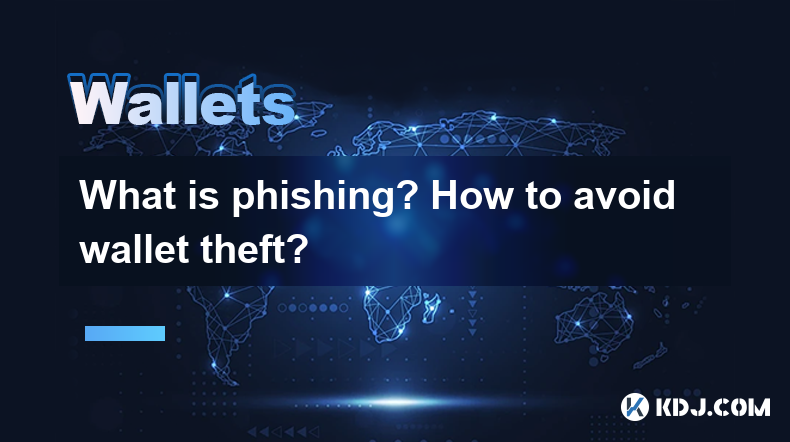
Phishing is a common cyber attack where attackers attempt to trick individuals into revealing sensitive information, such as login credentials or private keys, by posing as trustworthy entities. In the cryptocurrency circle, phishing attacks are particularly dangerous because they can lead to the theft of digital assets stored in wallets. Understanding how phishing works and learning how to avoid wallet theft are crucial for safeguarding your cryptocurrency.
Phishing in the Cryptocurrency Context
In the world of cryptocurrency, phishing attacks often target users' wallets. Attackers may send emails, create fake websites, or use social media to impersonate legitimate cryptocurrency services or exchanges. They aim to deceive users into entering their wallet details, private keys, or seed phrases into fraudulent platforms. Once attackers obtain this information, they can access and drain the victim's wallet, resulting in significant financial losses.
Types of Phishing Attacks in Cryptocurrency
There are several types of phishing attacks that cryptocurrency users should be aware of:
- Email Phishing: Attackers send emails that appear to come from a legitimate source, such as a cryptocurrency exchange. These emails often contain links to fake websites designed to steal your information.
- Website Phishing: Fake websites that mimic real cryptocurrency platforms are created to trick users into entering their login details or private keys.
- Social Media Phishing: Attackers may use social media to impersonate official accounts of cryptocurrency projects or exchanges, spreading malicious links or requesting sensitive information directly.
- SMS Phishing (Smishing): Similar to email phishing, attackers send text messages that contain links to fraudulent websites or request immediate action to protect your assets.
How to Identify Phishing Attempts
Recognizing phishing attempts is the first step in protecting your cryptocurrency wallet. Here are some key indicators to watch out for:
- Suspicious URLs: Always check the URL of the website you are visiting. Phishing sites often use URLs that are very similar to legitimate ones but with slight alterations.
- Urgency and Threats: Phishing emails or messages often create a sense of urgency, threatening account suspension or loss of funds if you do not act immediately.
- Unsolicited Requests: Be cautious of any unsolicited requests for personal information or private keys, especially if they come from unknown sources.
- Poor Grammar and Spelling: Many phishing attempts are characterized by poor grammar and spelling mistakes, which can be a red flag.
Steps to Avoid Wallet Theft
To protect your cryptocurrency wallet from theft, follow these detailed steps:
- Use Strong, Unique Passwords: Always use strong, unique passwords for your cryptocurrency accounts. Consider using a password manager to generate and store these passwords securely.
- Enable Two-Factor Authentication (2FA): Enable 2FA on all your cryptocurrency accounts. This adds an extra layer of security, making it harder for attackers to access your accounts even if they have your password.
- Verify Website Authenticity: Before entering any sensitive information, verify the authenticity of the website. Look for the lock icon in the address bar and ensure the URL matches the official site.
- Be Wary of Unsolicited Communications: Never click on links or download attachments from unsolicited emails or messages. If you receive an unexpected communication from a cryptocurrency service, contact them directly through their official channels to verify its legitimacy.
- Use Hardware Wallets: Consider using a hardware wallet for storing your cryptocurrency. Hardware wallets keep your private keys offline, making them much more secure against online phishing attacks.
- Regularly Update Software: Keep your computer, smartphone, and any cryptocurrency-related software up to date with the latest security patches.
- Educate Yourself and Others: Stay informed about the latest phishing techniques and educate your friends and family about the risks and how to avoid them.
What to Do If You Fall Victim to Phishing
If you suspect that you have fallen victim to a phishing attack and your wallet may have been compromised, take immediate action:
- Disconnect from the Internet: Immediately disconnect your device from the internet to prevent further unauthorized access.
- Change Passwords: Change the passwords for all your cryptocurrency accounts and any other accounts that may have been compromised.
- Contact Your Exchange or Wallet Provider: Notify your cryptocurrency exchange or wallet provider about the incident. They may be able to help you secure your account or recover your funds.
- Monitor Your Accounts: Closely monitor your cryptocurrency accounts for any unauthorized transactions and report any suspicious activity to the relevant authorities.
- Consider Professional Help: If you are unsure about how to proceed, consider seeking help from a cybersecurity professional who specializes in cryptocurrency security.
Additional Security Measures
Beyond the steps mentioned above, consider implementing these additional security measures to further protect your cryptocurrency wallet:
- Use a VPN: A Virtual Private Network (VPN) can help mask your IP address and encrypt your internet connection, adding an extra layer of security when accessing your cryptocurrency accounts.
- Implement Cold Storage: For long-term storage of large amounts of cryptocurrency, consider using cold storage solutions like paper wallets or hardware wallets that are not connected to the internet.
- Regularly Backup Your Wallet: Regularly backup your wallet to a secure location. This can help you recover your funds if your primary wallet is compromised.
- Use Multi-Signature Wallets: Multi-signature wallets require multiple private keys to authorize a transaction, adding an additional layer of security against unauthorized access.
Frequently Asked Questions
Q: Can phishing attacks target mobile apps as well as websites?
A: Yes, phishing attacks can target mobile apps. Attackers may create fake apps that mimic legitimate cryptocurrency apps, or they may use SMS phishing to trick users into downloading malicious apps or entering sensitive information.
Q: Is it safe to use public Wi-Fi when accessing my cryptocurrency wallet?
A: It is not recommended to use public Wi-Fi when accessing your cryptocurrency wallet. Public Wi-Fi networks are often less secure and can be more susceptible to hacking attempts. If you must use public Wi-Fi, consider using a VPN to encrypt your connection.
Q: How can I verify the authenticity of a cryptocurrency website?
A: To verify the authenticity of a cryptocurrency website, check the URL carefully for any slight variations that may indicate a phishing site. Look for the lock icon in the address bar, which indicates a secure connection. Additionally, you can bookmark the official website and always access it from your bookmarks to avoid falling for phishing sites.
Q: What should I do if I receive a suspicious email from a cryptocurrency service?
A: If you receive a suspicious email from a cryptocurrency service, do not click on any links or download any attachments. Instead, contact the service directly through their official website or customer support channels to verify the legitimacy of the email.
Disclaimer:info@kdj.com
The information provided is not trading advice. kdj.com does not assume any responsibility for any investments made based on the information provided in this article. Cryptocurrencies are highly volatile and it is highly recommended that you invest with caution after thorough research!
If you believe that the content used on this website infringes your copyright, please contact us immediately (info@kdj.com) and we will delete it promptly.
- Cryptos in July 2025: Massive Gains or Just Hype?
- 2025-07-05 20:30:13
- Pepe's EVM Layer 2 Meme Coin Mania: What's the Hype?
- 2025-07-05 20:50:12
- Shiba Inu, Dogecoin, and the Crypto Skyrocket: What's Making These Memes Soar?
- 2025-07-05 21:10:12
- Tokenized Stocks: Robinhood, Gemini, and the NYSE Threat
- 2025-07-05 21:10:12
- Altcoin Adventures: Navigating the Pepe Fork Frenzy and Solana's Summer Swings
- 2025-07-05 21:15:12
- Hong Kong's Tokenised Bond Leap: Zero Stamp Duty Sparks Web3 Ambitions
- 2025-07-05 20:30:13
Related knowledge
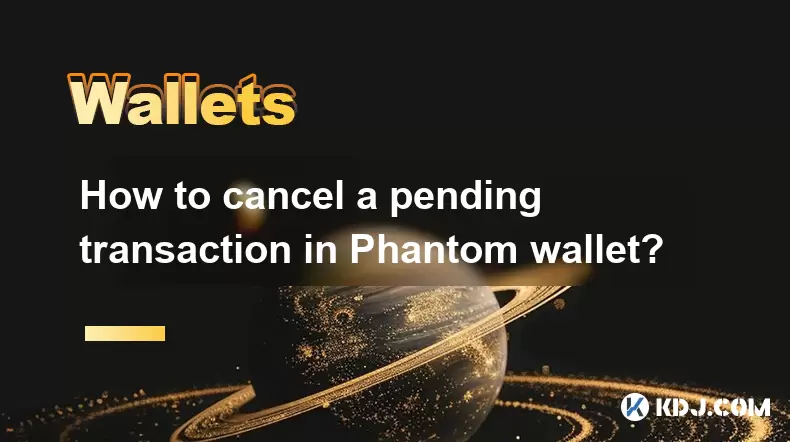
How to cancel a pending transaction in Phantom wallet?
Jul 03,2025 at 07:21pm
Understanding Pending Transactions in Phantom WalletA pending transaction in the Phantom wallet occurs when a user initiates a transfer or interaction with the Solana blockchain, but it hasn't yet been confirmed by the network. This can happen due to various reasons such as low transaction fees, network congestion, or incorrect gas settings. It's import...
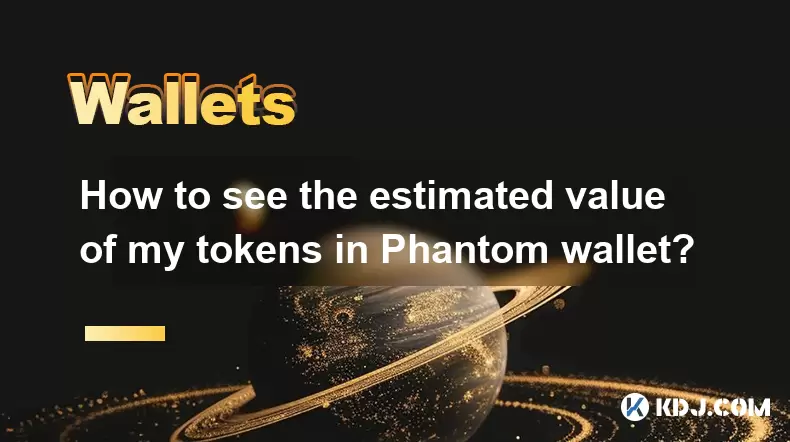
How to see the estimated value of my tokens in Phantom wallet?
Jul 04,2025 at 12:21am
What is Phantom Wallet?Phantom wallet is one of the most popular cryptocurrency wallets designed for the Solana blockchain. It allows users to store, send, receive, and manage various tokens built on Solana, including SPL tokens and NFTs. The wallet offers a user-friendly interface, making it accessible for both beginners and advanced users in the crypt...
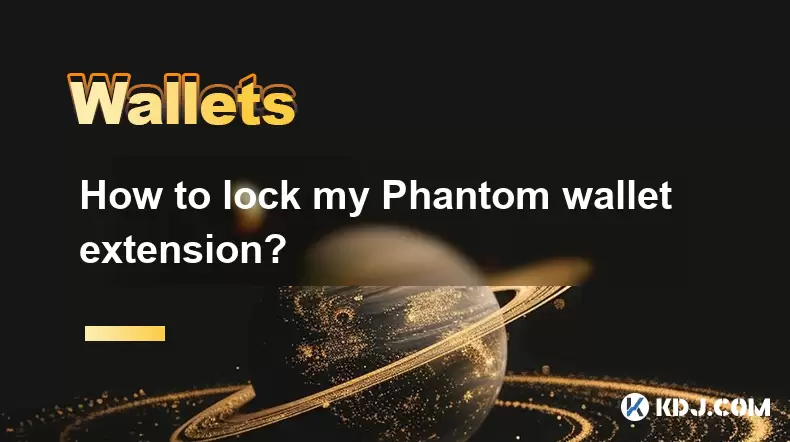
How to lock my Phantom wallet extension?
Jul 03,2025 at 11:14am
What Is the Phantom Wallet and Why Lock It?The Phantom wallet is a popular non-custodial cryptocurrency wallet designed for interacting with the Solana blockchain. Supporting both browser extensions and mobile apps, Phantom allows users to store, send, receive, and stake SOL tokens, as well as interact with decentralized applications (dApps). Securing y...

Does Phantom wallet offer two-factor authentication (2FA)?
Jul 03,2025 at 09:00am
Understanding Phantom Wallet and Its Security FeaturesPhantom wallet is a widely used non-custodial cryptocurrency wallet that supports the Solana blockchain. It allows users to store, send, receive, and interact with decentralized applications (dApps) seamlessly. As security is a top priority for any crypto wallet user, security features like two-facto...
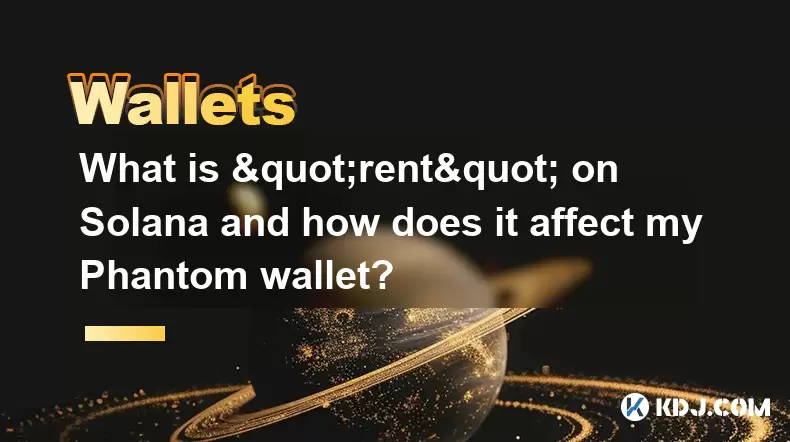
What is "rent" on Solana and how does it affect my Phantom wallet?
Jul 02,2025 at 08:35pm
Understanding 'Rent' on SolanaIn the context of Solana, the term 'rent' refers to a storage fee that users pay for maintaining data on the blockchain. Unlike Ethereum, where storage costs are paid once via gas fees during contract deployment, Solana implements a recurring cost model to ensure efficient usage of network resources. This means that any acc...
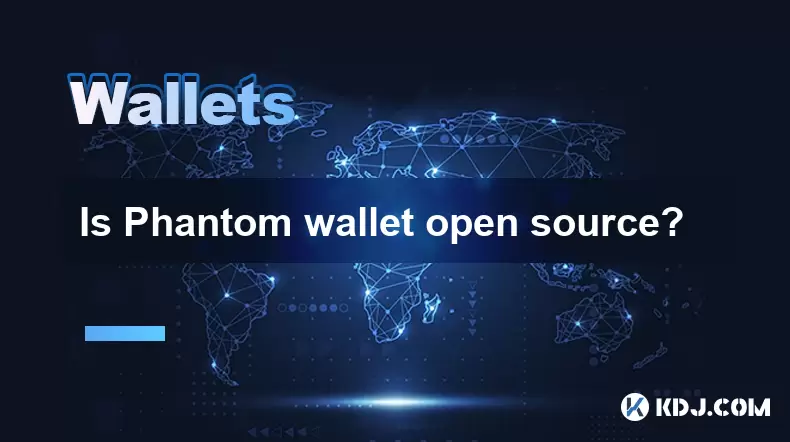
Is Phantom wallet open source?
Jul 03,2025 at 12:29am
What is Phantom Wallet?Phantom wallet is a non-custodial cryptocurrency wallet primarily designed for the Solana blockchain. It allows users to store, send, receive, and interact with decentralized applications (dApps) on the Solana network. The wallet is available as a browser extension and mobile application, offering a seamless experience for both be...

How to cancel a pending transaction in Phantom wallet?
Jul 03,2025 at 07:21pm
Understanding Pending Transactions in Phantom WalletA pending transaction in the Phantom wallet occurs when a user initiates a transfer or interaction with the Solana blockchain, but it hasn't yet been confirmed by the network. This can happen due to various reasons such as low transaction fees, network congestion, or incorrect gas settings. It's import...

How to see the estimated value of my tokens in Phantom wallet?
Jul 04,2025 at 12:21am
What is Phantom Wallet?Phantom wallet is one of the most popular cryptocurrency wallets designed for the Solana blockchain. It allows users to store, send, receive, and manage various tokens built on Solana, including SPL tokens and NFTs. The wallet offers a user-friendly interface, making it accessible for both beginners and advanced users in the crypt...

How to lock my Phantom wallet extension?
Jul 03,2025 at 11:14am
What Is the Phantom Wallet and Why Lock It?The Phantom wallet is a popular non-custodial cryptocurrency wallet designed for interacting with the Solana blockchain. Supporting both browser extensions and mobile apps, Phantom allows users to store, send, receive, and stake SOL tokens, as well as interact with decentralized applications (dApps). Securing y...

Does Phantom wallet offer two-factor authentication (2FA)?
Jul 03,2025 at 09:00am
Understanding Phantom Wallet and Its Security FeaturesPhantom wallet is a widely used non-custodial cryptocurrency wallet that supports the Solana blockchain. It allows users to store, send, receive, and interact with decentralized applications (dApps) seamlessly. As security is a top priority for any crypto wallet user, security features like two-facto...

What is "rent" on Solana and how does it affect my Phantom wallet?
Jul 02,2025 at 08:35pm
Understanding 'Rent' on SolanaIn the context of Solana, the term 'rent' refers to a storage fee that users pay for maintaining data on the blockchain. Unlike Ethereum, where storage costs are paid once via gas fees during contract deployment, Solana implements a recurring cost model to ensure efficient usage of network resources. This means that any acc...

Is Phantom wallet open source?
Jul 03,2025 at 12:29am
What is Phantom Wallet?Phantom wallet is a non-custodial cryptocurrency wallet primarily designed for the Solana blockchain. It allows users to store, send, receive, and interact with decentralized applications (dApps) on the Solana network. The wallet is available as a browser extension and mobile application, offering a seamless experience for both be...
See all articles

























































































